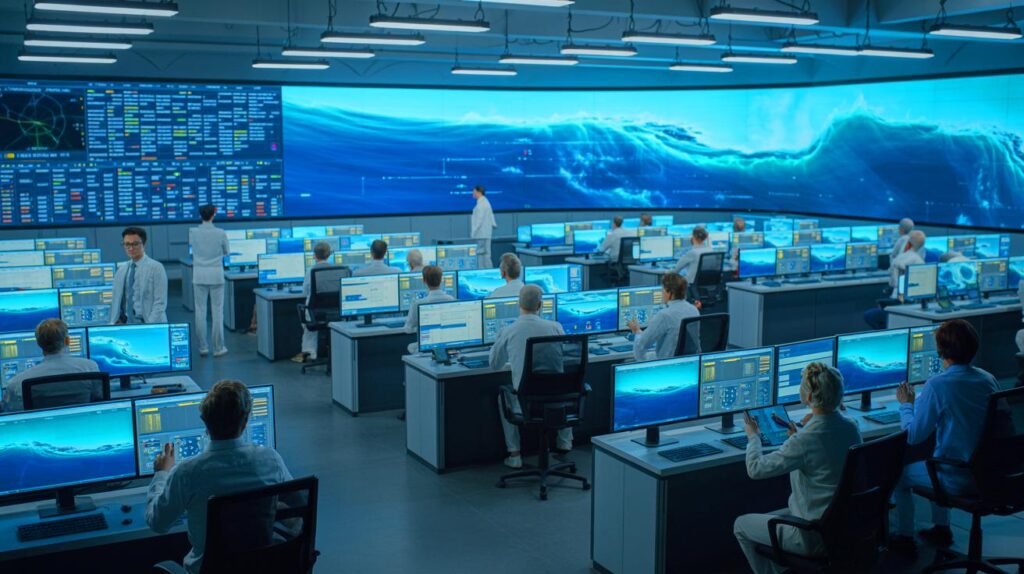| In Brief |
|
China continues to distinguish itself on the global stage with its latest technological advancement in ocean simulation. With the creation of the advanced LICOMK++ system, Chinese researchers have taken a significant step by offering unprecedented resolution. This model acts like a true “ocean microscope,” greatly improving forecasts of climatic phenomena such as typhoons, heatwaves, and floods. This development, despite U.S. export restrictions on semiconductors, marks a significant advance in global ocean modeling.
Steps Towards Technological Autonomy and Climate Resilience
This technology development showcases China’s increasing determination to achieve technological independence in critical fields. In the face of strict Western technology embargoes, researchers have overcome performance barriers in supercomputing using customized algorithms and optimized programming strategies. The key to improving the accuracy of climate forecasts lies in an ocean simulator, researchers explained. However, conducting high-resolution simulations requires massive computational power, a significant challenge so far in climate science.
The LICOMK++ system is the world’s first capable of simulating the global oceans at such fine scale. With this capability, Chinese scientists can assist global agencies in refining climate forecasts and creating more accurate models for coastal planning and disaster response. The ocean plays a crucial role in regulating the Earth’s climate, absorbing over 90% of the heat generated by climate change and more than 30% of human-induced carbon dioxide emissions. Simulating these processes is essential for understanding and adapting to climate change.
Global Recognition and Powerful Applications
LICOMK++ has already received global recognition. It won the best supercomputing application award at the HPC China 2024 event, organized by the Chinese Computer Federation. Last year, it was also one of three global finalists for the prestigious Gordon Bell Prize, the leading international award in high-performance computing for scientific advancements.
A report from the Chinese research team highlighted that meteorological agencies using this advanced model could benefit from higher-quality data, which could help improve global and regional forecasting of changes in the marine environment. According to the Chinese meteorological administration, LICOMK++ will also support various public services, including better planning for coastal disaster mitigation, more efficient management of marine resources, and enhanced climate adaptation strategies.
The Implications for the Global Scientific Community
This innovation could mark a turning point in global climate research. By enabling more precise ocean simulations, LICOMK++ promises to enhance scientific understanding of the Earth’s climate system and provide new tools to combat economic losses related to climate. The increased accuracy of ocean simulations could transform the way we forecast and respond to extreme climate events, thus offering better preparation for future environmental challenges.
This Chinese technological development could also encourage other countries to invest more in climate research and international cooperation. The ability to simulate the complex interactions between the oceans and the atmosphere at such detail opens new opportunities for climate science and natural resource management.
At the Crossroads: Technology and Sustainability
The introduction of the LICOMK++ simulator underscores the importance of technology in the fight against climate change. By providing more accurate forecasts and higher-quality data, this system can help mitigate the effects of natural disasters and plan for a more sustainable future. China, as a leader in the development of cutting-edge technologies, may inspire other nations to follow suit and invest in innovative solutions to preserve our planet.
As the world continues to face growing environmental challenges, how can the international community collaborate to maximize the benefits of these technological advancements and ensure a sustainable future for all?







